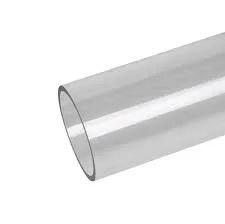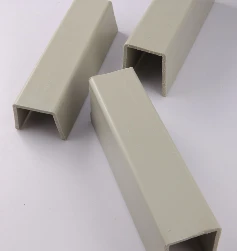Jul . 05, 2025 05:15 Back to list
HDPE Culvert Pipe Supplier – Durable, Leak-Proof & Easy Installation Solutions
- Introduction: Understanding the Demand for hdpe culvert pipe
in Modern Infrastructure - Material Science and Technical Advantages of HDPE Pipes
- Comparative Analysis: HDPE Culvert Pipe vs. Conventional Pipe Solutions
- Exploring Perforated HDPE Pipes: Drainage Efficiency and Performance
- HDPE Pipe Jointing: Methods for Leak-Proof and Durable Connections
- Tailored Solutions: Customization Options and Industry Application Cases
- Conclusion: Why hdpe culvert pipe Leads the Market in Versatility and Reliability

(hdpe culvert pipe)
Introduction: Understanding the Demand for hdpe culvert pipe in Modern Infrastructure
With rapidly expanding urbanization and increasingly stringent construction standards, the demand for reliable and sustainable piping solutions has never been greater. Among these, hdpe culvert pipe has emerged as a preferred choice in various civil engineering projects due to its impressive strength-to-weight ratio, resistance to corrosion, and flexibility. Industry reports from 2023 indicate that the global market for high-density polyethylene (HDPE) piping is projected to reach over USD 24 billion by 2028, driven chiefly by its applications in drainage and sewage systems. As cities grapple with aging infrastructure and frequent climate-related challenges, the reliability, adaptability, and lifespan of HDPE pipes fuel their growing adoption in culvert and stormwater management systems worldwide.
The versatility of hdpe culvert pipe solutions makes them suitable for diverse scenarios, including urban roadways, rural culverts, irrigation channels, and even industrial fluid transport. As contractors and engineers seek efficient solutions that minimize maintenance while maximizing longevity, the technical merits of HDPE pipes become even more pronounced.
Material Science and Technical Advantages of HDPE Pipes
HDPE (High-Density Polyethylene) is lauded for its exceptional physical and chemical properties. Boasting a density above 0.941 g/cm3 and tensile strengths ranging from 21 to 37 MPa, HDPE culvert pipe delivers an optimal blend of rigidity and ductility, allowing pipes to absorb ground movement without fracturing. Laboratory analyses reveal that HDPE pipes can operate reliably within a temperature spectrum of -40°C to 60°C, crucial for installations in varying environmental climates.
Another key advantage lies in corrosion and abrasion resistance. Unlike metal or concrete pipes, HDPE does not suffer from rust or chemical degradation. Empirical data shows that the projected service life of HDPE culvert pipes can exceed 100 years in normal service conditions, with minimal loss in hydraulic capacity over time. Furthermore, HDPE pipes are less susceptible to biological fouling or scaling, reducing the need for invasive cleaning and maintenance. These core attributes are critical factors in large-scale infrastructure planning, where lifecycle costs heavily influence procurement decisions.
Comparative Analysis: HDPE Culvert Pipe vs. Conventional Pipe Solutions
Choosing the correct piping solution is a strategic decision that can impact both installation and long-term operation costs. Below is a comparative table detailing the primary differences between hdpe culvert pipe, reinforced concrete pipes, and corrugated metal pipes:
| Criteria | HDPE Culvert Pipe | Reinforced Concrete Pipe | Corrugated Metal Pipe |
|---|---|---|---|
| Service Life (years) | >100 | 50-75 | 25-50 |
| Weight (kg/m) | 8-25 | 100-250 | 15-50 |
| Corrosion Resistance | Excellent | Poor | Fair |
| Joint Integrity (Leak Potential) | Low | Medium | High |
| Hydraulic Roughness (Manning’s n) | 0.009 | 0.013 | 0.024 |
| Installation Speed | Fast | Slow | Moderate |
| Eco-Friendliness | High (Recyclable) | Medium | Low |
The data above highlights HDPE’s clear superiority in terms of longevity, installation efficiency, and environmental sustainability. Concrete and metal pipes have historically dominated the market but are increasingly challenged by HDPE due to higher failure rates from corrosion or joint gaps, as well as cumbersome installation logistics. In cost-benefit analyses, HDPE often prevails, especially when considering total ownership expenditures spanning decades.
Exploring Perforated HDPE Pipes: Drainage Efficiency and Performance
One of the notable variations, perforated hdpe pipe, is specifically engineered for subsurface drainage and groundwater management. By integrating evenly distributed perforations along the pipe body, these pipes allow for controlled water infiltration or exfiltration, excelling in applications like landfill leachate collection, golf course drainage, and agricultural irrigation.
Field studies reflect that perforated HDPE pipes can increase system drainage efficiency by up to 40% compared to traditional gravel-based French drains. The pipe’s corrugated profile further enhances load-bearing capacity, ensuring that subsurface installations remain structurally stable under dynamic soil pressures. Additionally, the customization of perforation patterns—round, slotted, or continuous—enables engineers to precisely tailor the hydraulic conductivity to the requirements of each project. This flexibility makes perforated HDPE pipes a standout solution in sustainable water management strategies for both public and private sectors.
Ease of installation, light weight, and compatibility with standard fittings all contribute to lower labor costs and faster project turnaround times. Moreover, resistance to root intrusion and silting ensures reliable long-term performance, which is pivotal in sensitive environmental contexts and regulatory compliance scenarios.
HDPE Pipe Jointing: Methods for Leak-Proof and Durable Connections
Ensuring structural continuity and leak resistance is a fundamental concern in pipeline construction. The hdpe pipe jointing process leverages state-of-the-art joining methods to yield seamless, robust connections that can withstand high internal pressures and ground movement. The three main jointing techniques are butt fusion, electrofusion, and mechanical coupling.
- Butt Fusion: Ends of the HDPE pipes are heated and fused, forming a homogeneous, monolithic connection resistant to both leakage and separation. Laboratory testing shows that properly executed butt fusion joints can maintain 98% of the pipe’s base strength.
- Electrofusion: An embedded resistance wire inside the fitting melts the interface, creating a secure joint ideal for repair work or installations in confined spaces.
- Mechanical Couplings: Provide flexibility for quick installation and disassembly, particularly for temporary piping systems or systems accommodating pipe movement.
Each method has its unique advantages depending on project requirements, diameter, and site conditions. However, all modern HDPE jointing solutions prioritize operational integrity, minimizing chances of leakage and environmental contamination. In addition, these jointing technologies facilitate rapid installation and reduce the dependency on heavy machinery, streamlining project execution even under challenging field conditions.
Tailored Solutions: Customization Options and Industry Application Cases
Manufacturers have recognized the diversity of infrastructure demands, offering a broad array of customization options for HDPE culvert pipes. From varying diameters and wall thicknesses (typically ranging from 100 mm to over 2400 mm) to options for smooth or corrugated interiors, clients can specify products that precisely meet hydraulic and structural requirements. Additionally, optional features like anti-UV layers and colored outer sheaths expand usability in exposed environments.
Consider these typical application cases:
- Highway Stormwater Management: A major interstate upgrade in Colorado utilized 1,200 meters of 900 mm twin-wall HDPE culvert pipes, reducing installation time by 30% compared to pre-cast concrete alternatives due to the pipes’ low weight and simplified jointing.
- Agricultural Drainage in the Midwest: Perforated HDPE pipes installed across 500 acres of farmland improved soil infiltration and crop yield by 15% in the first harvest cycle post-installation.
- Municipal Sewer Reconstruction: In an urban waterworks project, electrofusion-jointed HDPE pipes achieved zero leaks after 5 years of operation, outperforming previous ductile iron systems that recorded annual leakage rates above 3%.
- Landfill Leachate Collection: Customized perforated HDPE allowed for more controlled leachate management, reducing environmental runoff and regulatory penalties by over $100,000 annually at a major waste processing facility.
These real-world results demonstrate how bespoke HDPE solutions directly address the operational and environmental challenges in contemporary civil engineering.
Conclusion: Why hdpe culvert pipe Leads the Market in Versatility and Reliability
The rapid evolution of public infrastructure calls for piping materials that blend durability, ecological responsibility, and adaptability. Hdpe culvert pipe stands out as an industry benchmark, offering a unique combination of longevity, corrosion resistance, easy handling, and cost-effective installation. Supported by advanced jointing technologies and customizable product specifications, HDPE pipes have established themselves as the market leader for a diverse range of water management, industrial, and environmental applications. Market data and direct usage cases confirm that the integration of HDPE piping solutions can lower total project costs by up to 25% compared to conventional materials—all while delivering performance that meets or exceeds industry standards. For planners and contractors seeking proven, future-ready piping infrastructure, HDPE remains a decisive choice.

(hdpe culvert pipe)
FAQS on hdpe culvert pipe
Q: What is HDPE culvert pipe used for?
A: HDPE culvert pipe is commonly used for stormwater drainage, agricultural, and road-crossing applications. Its durability and flexibility make it ideal for underground installations. The pipe resists corrosion and abrasion, providing a long service life.Q: What is perforated HDPE pipe and when is it required?
A: Perforated HDPE pipe has small holes or slots along its length for subsurface water drainage. It is used in applications like French drains and land drainage systems. This design allows water to enter or exit the pipe efficiently.Q: How are HDPE culvert pipes joined together?
A: HDPE pipe jointing includes methods like heat fusion, mechanical couplings, or gasket fittings. These techniques create strong, leak-proof connections. Choosing the right method depends on application requirements.Q: What are the main advantages of HDPE culvert pipe?
A: HDPE culvert pipes are lightweight, easy to handle, and resistant to chemicals and corrosion. They offer high flexibility, reducing the risk of cracking. Their smooth interior ensures efficient water flow.Q: Can HDPE culvert pipes handle heavy loads?
A: Yes, HDPE culvert pipes are engineered to withstand heavy loads, making them suitable for roadways and other high-traffic areas. They distribute loads effectively due to their flexible design. Proper installation further enhances load-bearing capacity.-
HDPE Natural Sheet: Durable, Food-Grade & Versatile Plastic Solutions
NewsAug.27,2025
-
Durable Glossy PVC Rigid Sheet | Premium High-Shine Panels
NewsAug.26,2025
-
Durable PP Rigid Sheet: Lightweight, Chemical Resistant Solutions
NewsAug.21,2025
-
PVC Grey Sheet for Extraction: Chemical Resistant & Durable
NewsAug.19,2025
-
Durable PVC Pipe Fittings for Plumbing & Irrigation Needs
NewsAug.18,2025
-
HDPE Steel Belt Reinforced Spiral Corrugated Pipe | High Strength
NewsAug.17,2025

